As of this writing, the Oxford English Dictionary amasses more than 170,000 words in total, that’s massive.
English is a complex language, but sometimes, you’ll wonder: do we really need all those 170k words?
Of course not. There are linguistic elements and words that we can live without.
From unnecessary prepositions and nominalizations to adverbs that apologise, these are what you call grammar junk.
But are there words in the English dictionary that we can’t live without?
Yes, and on the top of our list are action verbs.
These words breathe life into sentences, transforming passive descriptions into dynamic scenes that readers can visualize.
But what exactly makes a verb “active”? How do you know when to use one? And why do they matter so much in both writing and speech?
This comprehensive guide will answer all these questions and more, providing you with the tools to energize your writing through the strategic use of action verbs.
What Are Action Verbs?
In linguistic terms, lexical verbs express physical or mental action.
They tell what someone or something is doing, rather than describing a state of being.
These dynamic predicates create movement, progress, and change in your sentences.
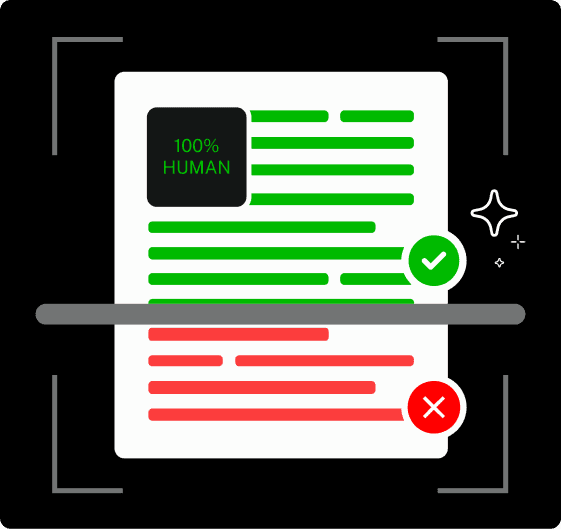
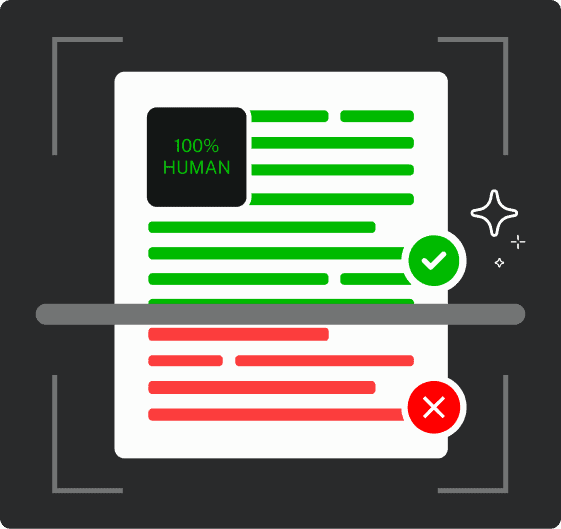
Never Worry About AI Detecting Your Texts Again. Undetectable AI Can Help You:
- Make your AI assisted writing appear human-like.
- Bypass all major AI detection tools with just one click.
- Use AI safely and confidently in school and work.
Think of it this way: when you use action verbs, you’re showing the movie rather than displaying a still photograph.
Instead of saying “The tree was tall” (using the stative verb “was”), you might write “The tree towered over the house” (using the action verb “towered”).
Action verbs paint pictures in your reader’s mind.
They help readers see characters moving through scenes, ideas developing, and stories unfolding. Without them, writing feels static and lifeless.
Action Verbs vs. Stative Verbs
To understand action verbs better, it helps to contrast them with their counterparts: stative verbs.
Stative verbs describe states, conditions, beliefs, emotions, or relationships rather than actions.
They tell us about how things are rather than what things are doing.
Common stative verbs include:
- Be (am, is, are, was, were)
- Seem
- Appear
- Have
- Own
- Like
- Love
- Hate
- Believe
- Know
- Understand
- Recognize
Let’s compare some sentences with stative versus action verbs:
- Stative: She has a beautiful voice.
Action: She belted out the high notes.
- Stative: He is angry about the decision.
Action: He slammed his fist on the table.
- Stative: They knew the answer.
Action: They discovered the solution.
Notice how the action verbs create more vivid, specific images. They don’t just tell us what is—they show us what happens.
Why Action Verbs Matter in Writing & Speech
Action verbs aren’t just grammatical constructs—they’re essential tools for effective communication.
Here’s why they matter:
- They create clarity. Action verbs specify exactly what’s happening, removing ambiguity from your writing.
- They build momentum. A series of well-chosen action verbs propels your reader through the text.
- They eliminate wordiness. One strong action verb often replaces several weaker words.
- They engage the senses. Action verbs help readers see, hear, feel, taste, and smell what you’re describing.
- They strengthen persuasion. In persuasive writing, action verbs create urgency and conviction.
Ernest Hemingway, known for his direct and impactful prose, relied heavily on action verbs. Consider this passage from “The Old Man and the Sea”: “He rowed steadily and saw the phosphorescence of the Gulf Stream in the water.” Without saying much, Hemingway creates a vivid scene through his choice of verbs.
Types of Action Verbs
Action verbs come in different forms. Understanding these variations helps you use them more effectively and precisely.
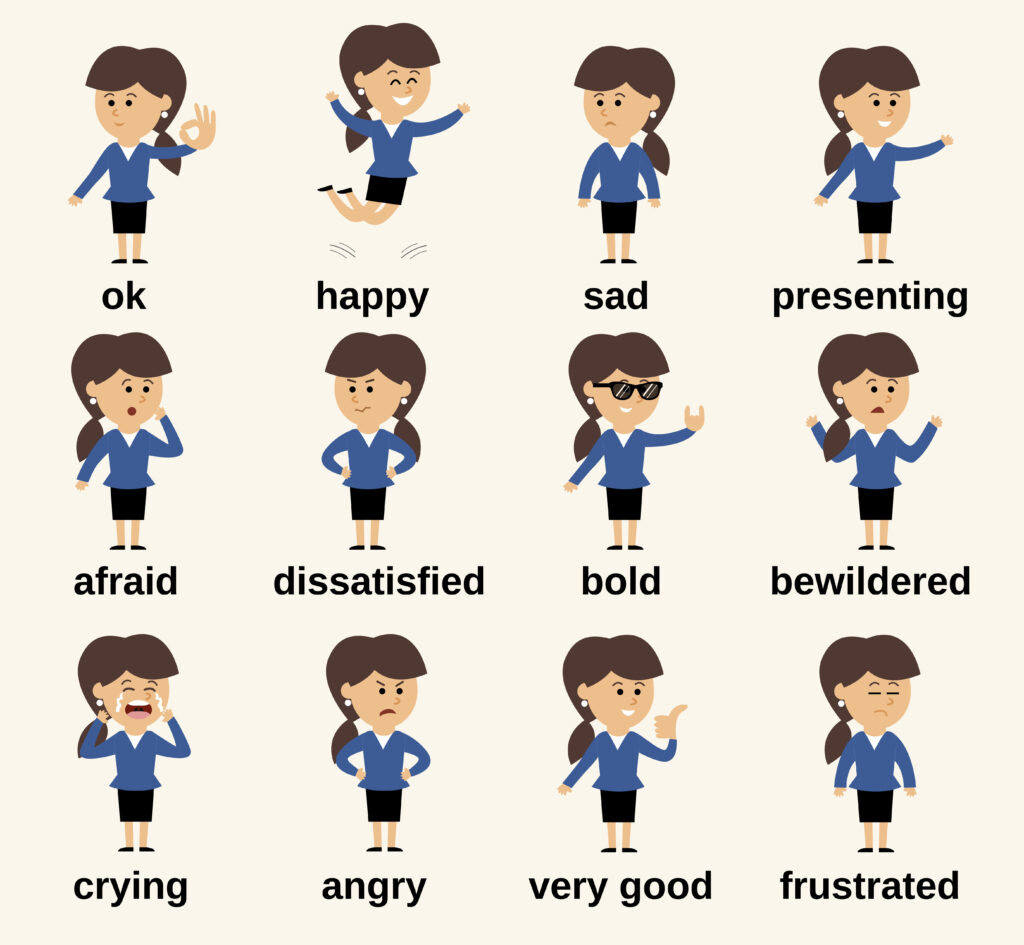
Transitive Action Verbs (With Direct Objects)
Transitive action verbs transfer action to someone or something else.
They require a direct object—a noun or pronoun that receives the action.
Examples:
- She threw the ball. (The ball is the direct object)
- He built a sandcastle. (A sandcastle is the direct object)
- They prepared dinner. (Dinner is the direct object)
Without their direct objects, these sentences would feel incomplete: “She threw” or “He built” leave us wondering what was thrown or built.
Intransitive Action Verbs (Without Direct Objects)
Intransitive action verbs express complete actions without transferring action to a direct object.
They stand alone or may be followed by an adverb or prepositional phrase.
Examples:
- The child laughed. (No direct object needed)
- She slept soundly. (Followed by an adverb)
- They arrived at the station. (Followed by a prepositional phrase)
Some verbs can be both transitive and intransitive, depending on their usage:
- Transitive: The chef cooked a meal.
- Intransitive: The chef cooked for hours.
Knowing whether a verb is transitive or intransitive helps you construct grammatically correct sentences and avoid common errors.
Dynamic vs. Physical vs. Mental Verbs
We can further categorize action verbs based on the type of action they describe.
Physical action verbs describe observable movements or activities:
- Run
- Jump
- Write
- Cut
- Build
- Dance
- Swim
Mental action verbs describe cognitive processes that happen in the mind:
- Think
- Consider
- Analyze
- Remember
- Decide
- Calculate
- Imagine
Dynamic action verbs describe processes or changes that occur over time:
- Grow
- Change
- Develop
- Transform
- Evolve
- Improve
- Deteriorate
Each type serves a different purpose in your writing.
Physical action verbs create visual scenes, mental action verbs explore characters’ inner worlds, and dynamic action verbs show progression and transformation; even when embedded in interrogative sentences that ask, rather than declare.
Examples of Common Action Verbs
The English language offers thousands of action verbs.
Here are some common ones grouped by category to inspire your writing:
Communication Verbs:
- Speak
- Shout
- Whisper
- Discuss
- Argue
- Explain
- Persuade
Movement Verbs:
- Walk
- Run
- Sprint
- Crawl
- Leap
- Slide
- Stumble
Creation Verbs:
- Build
- Draw
- Write
- Compose
- Design
- Craft
- Construct
Destruction Verbs:
- Break
- Shatter
- Demolish
- Crush
- Tear
- Smash
- Destroy
Emotional Expression Verbs:
- Smile
- Laugh
- Cry
- Frown
- Scowl
- Grimace
- Pout
When revising your writing, keep lists like these handy. They’ll help you replace generic verbs with more specific, engaging options.
How to Use Action Verbs in Sentences
Knowing action verbs is one thing, using them effectively is another.
Unlike irregular verbs, which often follow unpredictable conjugation patterns, action verbs (especially regular ones) can be strategically placed to sharpen tone, clarify intent, and energize your writing.
Here are practical tips for incorporating action verbs into your writing:
- Replace forms of “to be” when possible. Instead of “The cat was on the fence,” try “The cat perched on the fence.”
- Choose specific verbs over general ones. Rather than “She went across the room,” write “She strode across the room” or “She tiptoed across the room.”
- Match the verb to the tone. Different action verbs create different moods. “He shuffled to the door” creates a very different image than “He raced to the door.”
- Avoid overreliance on adverbs. Instead of modifying weak verbs with adverbs, choose stronger verbs. Replace “She walked quickly” with “She hurried” or “She dashed.”
- Consider the connotations. Action verbs carry emotional weight. “She grabbed the book” suggests something different than “She selected the book.”
- Vary your verb choices. Using the same verbs repeatedly makes writing monotonous. Find synonyms that add nuance and freshness.
Let’s see these principles in action with a before-and-after example:
Before (weak verbs): The dog was in the yard. It went to the fence when it saw the mailman. The mailman was afraid and moved away quickly. The dog was happy and returned to its spot under the tree.
After (strong action verbs): The dog lounged in the yard. It charged to the fence when it spotted the mailman. The mailman flinched and retreated hastily. The dog pranced back to its spot under the tree.
Notice how the second paragraph creates a more vivid scene. You can actually visualize the interaction rather than simply understanding it.
How to Never Get Action Verbs Wrong Again
Even experienced writers sometimes second-guess their verb choices.
Fortunately, these Undetectable.AI tools make mastering action verbs easier, faster, and smarter:
Undetectable.AI’s AI Essay Writer – Build Clear, Action-Focused Sentences
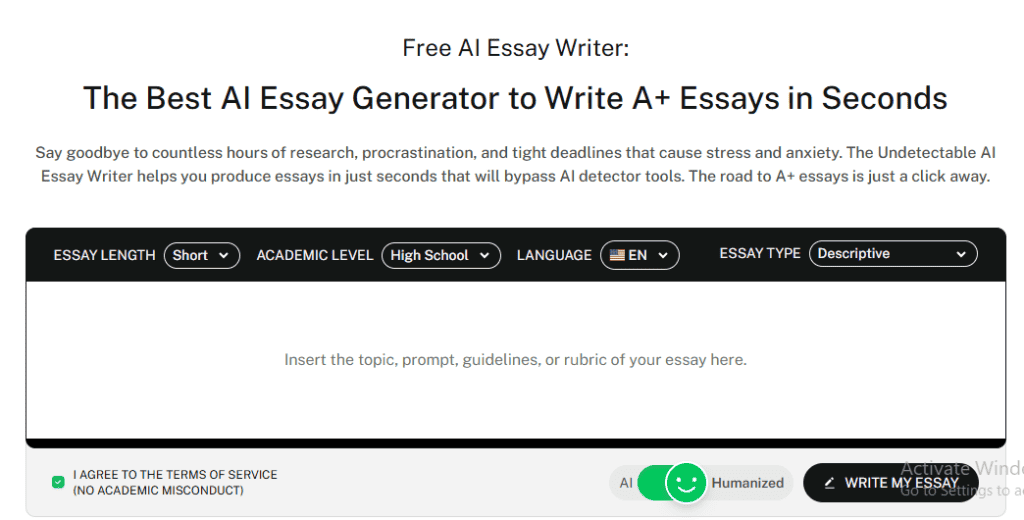
This powerful tool generates human-like essays in seconds while prioritizing clarity and natural flow.
It analyzes your prompts and outputs writing that features strong verb choices, active constructions, and reader-friendly sentence structure.
You can even customize the tone, length, and essay type—perfect for any school or professional setting.
Undetectable AI’s Paraphrasing tool – Rewrite Vague Language Using Stronger Verbs
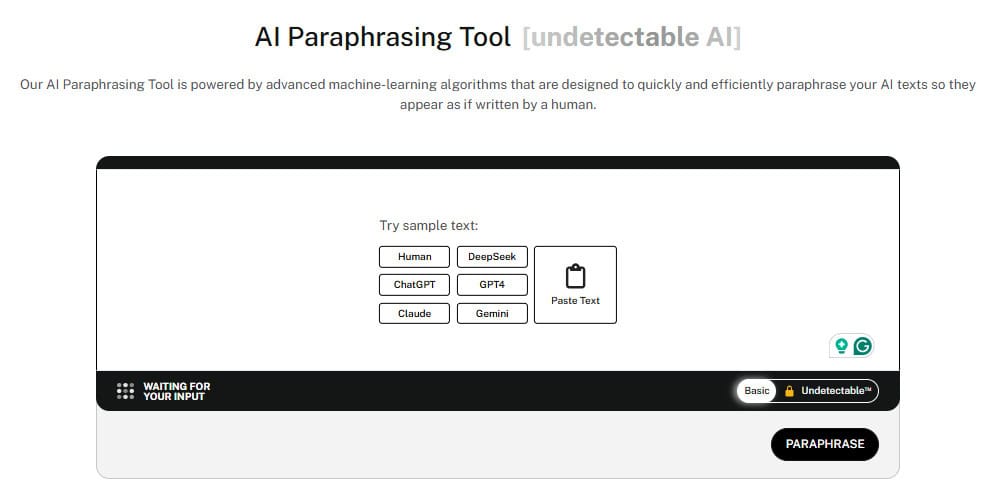
When your writing sounds robotic or lacks punch, this tool steps in. It intelligently rephrases weak or generic expressions, replacing multi-word verb phrases like “make a decision” with tighter alternatives like “decide.”
It’s also designed to humanize AI-generated content and pass AI detectors—ideal for polishing and powering up any draft.
Undetectable.AI’s AI Chat – Ask Anything About Verbs and Grammar

Whether you’re stuck on verb tense, confused about mood, or unsure if your verbs are too passive, this real-time chat assistant gives fast, context-aware answers.
It’s like having a grammar tutor on call 24/7—with the bonus that it humanizes every response, bypassing AI detection tools.
Undetectable.AI’s Ask AI (InstaSolve) – Action Verbs Help for School Projects

Snap a photo of your assignment or type your question—this student-friendly tool provides accurate, citation-backed answers and grammar help instantly.
From recognizing weak verbs to offering improved rewrites, Ask AI supports better writing across subjects and levels, while keeping the output humanlike and undetectable.
Beyond these tools, consider these additional strategies:
- Read extensively. Notice how skilled writers use action verbs to create specific effects.
- Keep a verb journal. When you encounter powerful verbs in your reading, jot them down for future use.
- Practice verb substitution exercises. Take a paragraph from your writing and challenge yourself to replace every weak verb with a stronger alternative.
- Join a writing group. Feedback from others often highlights areas where stronger verbs would improve your work.
The more conscious you become of verb choices, the more naturally you’ll incorporate powerful action verbs into your everyday writing.
Don’t leave without exploring our AI Detector and Humanizer in the widget below!
Write Like You Mean It
Action verbs form the backbone of engaging, clear communication.
They transform abstract ideas into concrete images, passive observations into dynamic scenes, and dull sentences into memorable prose.
By mastering action verbs, you’ll take your writing to new heights—making it more precise, more compelling, and more enjoyable to read.
Remember these key takeaways:
- Action verbs show what’s happening rather than just describing states of being
- Different types of action verbs (transitive, intransitive, physical, mental, dynamic) serve different purposes
- The best writing uses specific, varied action verbs that create vivid mental images
- Tools like Undetectable.AI’s Essay Writer and Paraphraser can help you identify weak verbs and replace them with stronger alternatives, while AI Chat and Ask AI offer instant support when you’re unsure which verb fits best
The journey to better writing begins with a single step, or should I say, it launches with a powerful action verb.
Start noticing the verbs you use today, and watch how small changes transform your communication.
Now it’s your turn to practice.
Take a piece of your writing and highlight all the verbs. How many are forms of “to be”? How many are generic verbs like “go,” “do,” or “make”? Challenge yourself to replace at least half of them with more specific, vivid action verbs.
Your readers will thank you.
